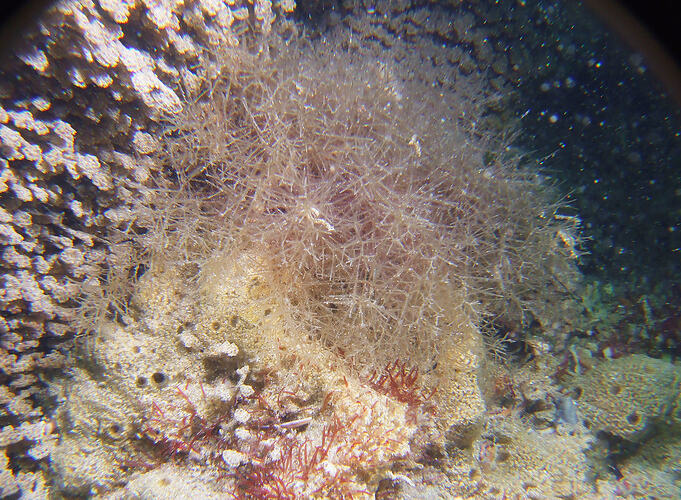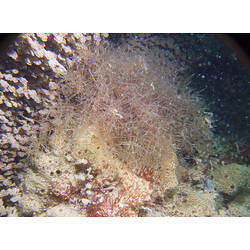General Description
Colony of individual polyps (hydranths) joined by root-like network of tubular stolons at the base. Colony shape is tree-like or bushy (arborescent). Colour: colony pale greenish to honey brown, often pink from a thin coating of coralline algae. Up to 25 cm high.
Biology
Colonies of this species grow during winter and early spring.
Distribution
Worldwide in temperate oceans, including southern Australia.
Habitat
Rubble sea floor in open areas with strong current flow.
More Information
-
Animal Type
-
Animal SubType
-
Brief Id
Wiry, bushy colonies without a main stem.
-
Maximum Size
25 cm
-
Habitats
-
Diet
Plankton or Particles
-
Diet Categories
Plankton
-
Hazards
Generally not harmful but still able to sting bare skin.
-
Endemicity
-
Commercial
No
-
Conservation Statuses
DSE Advisory List: Not listed, EPBC Act 1999: Not listed, IUCN Red List: Not listed
-
Depths
Shallow (1-30 m)
-
Water Column Locations
On or near seafloor
-
Taxon Name
-
Scientific Author
(Kirchenpauer, 1864)
-
Common Name
Hydroid
-
Phylum
-
Class
-
Subclass
-
Order
-
Family
-
Genus
-
Species Name
fasciculata



